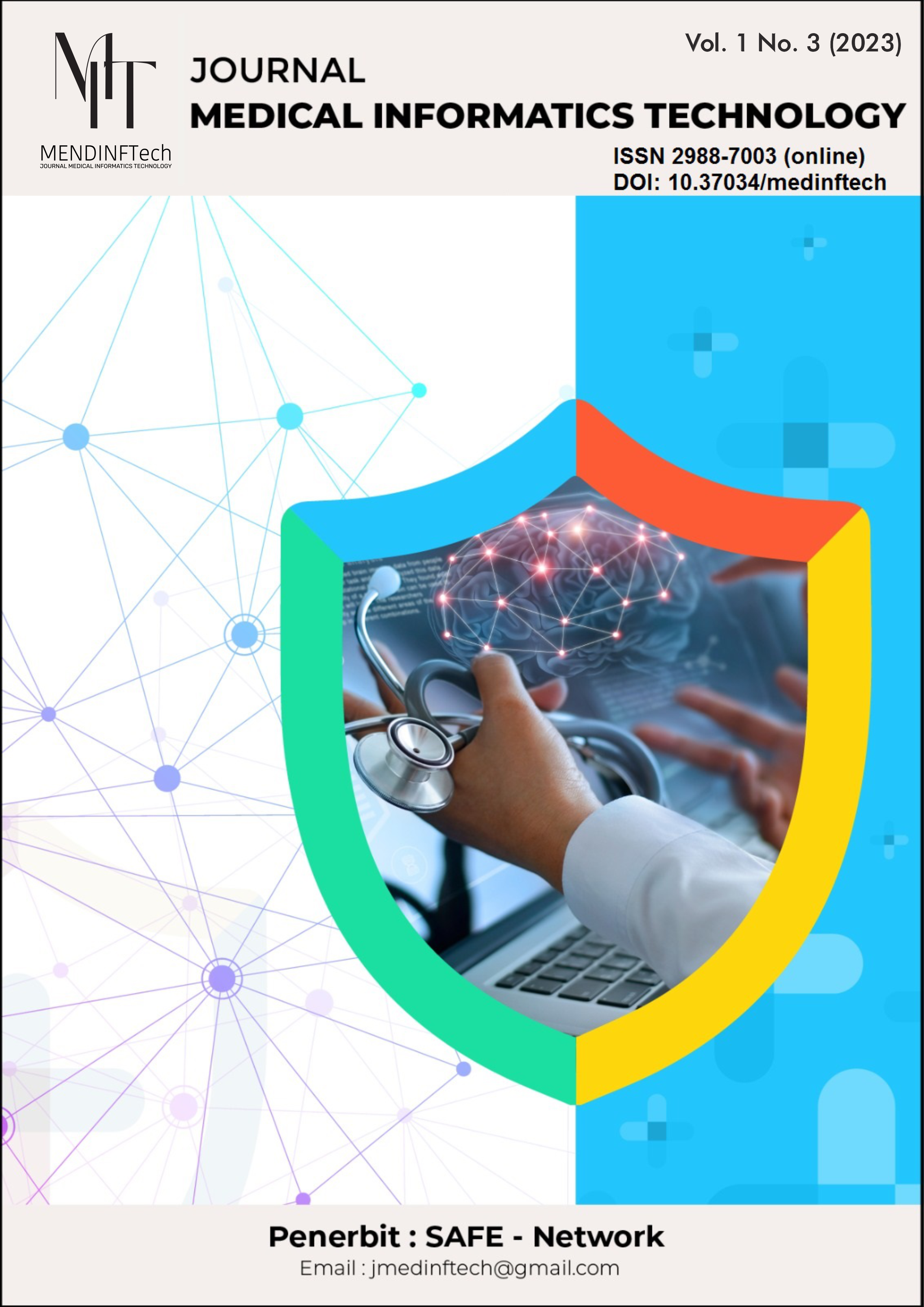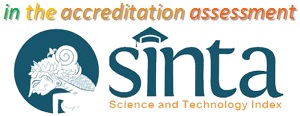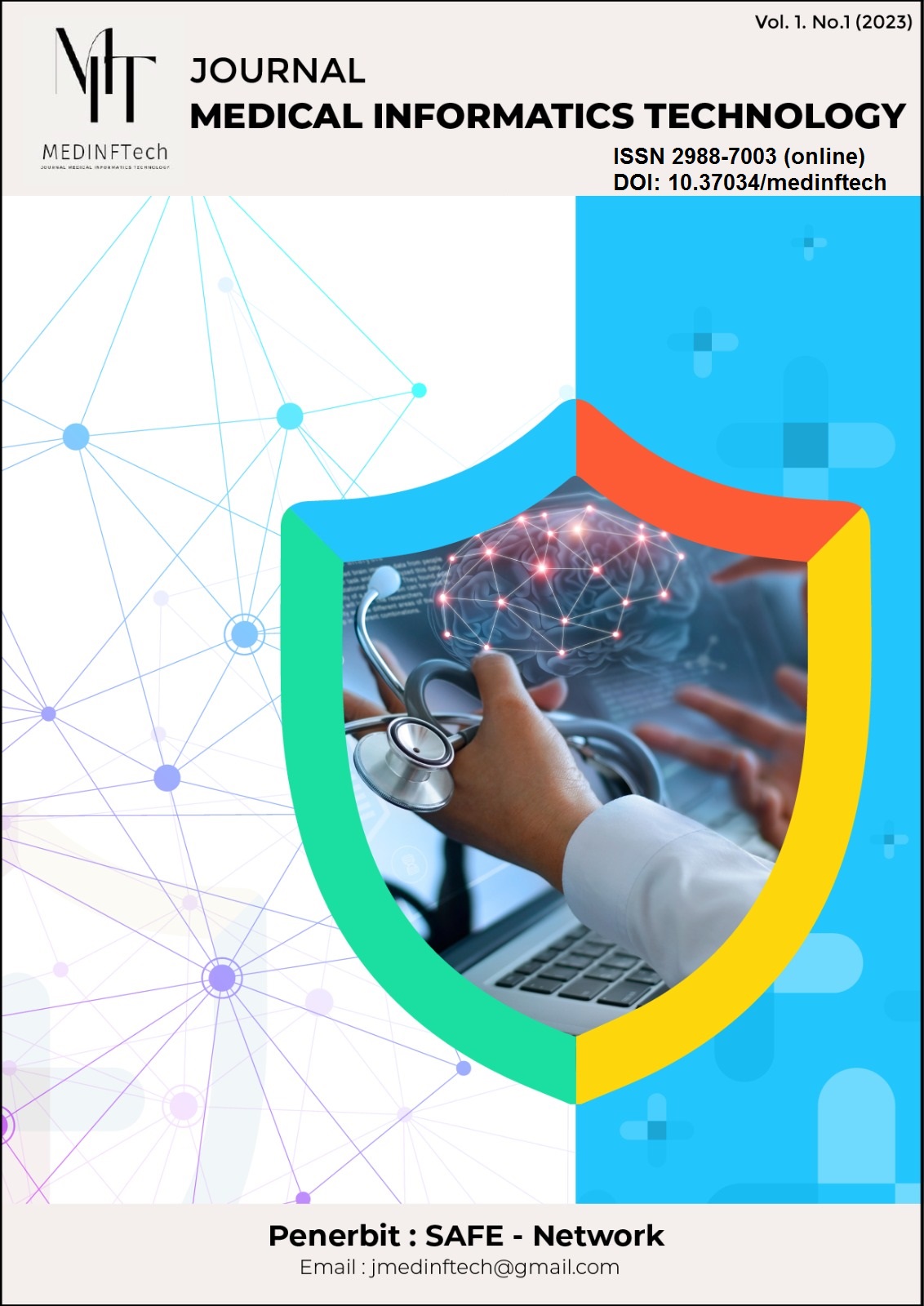Enhancing Skin Cancer Classification Using Optimized InceptionV3 Model
DOI:
https://doi.org/10.37034/medinftech.v1i3.14Keywords:
Classification, Skin Cancer, inceptionv3Abstract
Skin cancer is a disease that starts in skin cells characterized by uncontrolled growth that can attack skin tissue. Although it has a high cure rate if treated in a timely manner, a delay in diagnosis can have serious consequences. The use of computer technology, especially Artificial Intelligence (AI), has played an important role in improving health services, including in the context of skin cancer. New innovations in the classification and detection of skin cancer using artificial neural networks have led to significant improvements in diagnosis and treatment. One promising approach is using the InceptionV3 algorithm, which has high accuracy and is capable of processing high-resolution images. This study aims to implement InceptionV3 to classify two types of skin cancer, namely malignant and benign, with an emphasis on improving accuracy performance. With the pre-processing process, namely augmentation and the addition of several features, this study aims to provide accurate and efficient results in skin cancer classification. The results of this study can have a positive impact in increasing the accuracy of early detection of skin cancer, especially by future researchers.
Downloads
References
R. Yohannes and M. E. Al Rivan, “Klasifikasi Jenis Kanker Kulit Menggunakan CNN-SVM,” J. Algoritm., vol. 2, no. 2, pp. 133–144, 2022, doi: 10.35957/algoritme.v2i2.2363.
M. M. Topik and M. Al Farisi, “Bedah Mikrografi Mohs: Mohs Micrographic Surgery,” J. Med. Nusant., vol. 1, no. 3, pp. 41–60, 2023.
S. Kaymak, P. Esmaili, and A. Serener, “Deep Learning for Two-Step Classification of Malignant Pigmented Skin Lesions,” 2018 14th Symp. Neural Networks Appl. NEUREL 2018, pp. 1–6, 2018, doi: 10.1109/NEUREL.2018.8587019.
Z. Dlamini et al., “AI and precision oncology in clinical cancer genomics: From prevention to targeted cancer therapies-an outcomes based patient care,” Informatics Med. Unlocked, vol. 31, no. April, p. 100965, 2022, doi: 10.1016/j.imu.2022.100965.
H. P. Kekal and D. U. E. Saputri, “Optimization of Melanoma Skin Cancer Detection with the Convolutional Neural Network,” J. Med. Informatics Technol. is, pp. 53–58, 2023, doi: 10.37034/medinftech.v1i2.10.
Luqman Hakim, Z. Sari, and H. Handhajani, “Klasifikasi Citra Pigmen Kanker Kulit Menggunakan Convolutional Neural Network,” J. RESTI (Rekayasa Sist. dan Teknol. Informasi), vol. 5, no. 2, pp. 379–385, 2021, doi: 10.29207/resti.v5i2.3001.
F. Royana, P. Y. Maulida, R. N. Hasanah, S. S. Rahayu, and Rasim, “Aplikasi Mobile Deteksi Dini Kanker Kulit Berdasarkan Image Processing,” J. Litbang Edusaintech, vol. 3, no. 1, pp. 135–140, 2021, [Online]. Available: http://cbt2olympicad6.unimus.ac.id/index.php/jle/article/download/55/57.
M. A. Amrullah and M. I. Irawan, “Implementasi Jaringan Saraf Konvolusional dengan Inception-V3 untuk Deteksi Katarak Menggunakan Gambar Digital Funduskopi,” J. Sains dan Seni ITS, vol. 12, no. 1, 2023, doi: 10.12962/j23373520.v12i1.106807.
X. Xia, C. Xu, and B. Nan, “Inception-v3 for flower classification,” 2017 2nd Int. Conf. Image, Vis. Comput. ICIVC 2017, pp. 783–787, 2017, doi: 10.1109/ICIVC.2017.7984661.
C. Wang et al., “Pulmonary image classification based on inception-v3 transfer learning model,” IEEE Access, vol. 7, pp. 146533–146541, 2019, doi: 10.1109/ACCESS.2019.2946000.
M. K. Soegeng, L. Liliana, and A. Noertjahyana, “Penerapan Convolutional Neural Network untuk Klasifikasi Kanker Kulit Melanoma pada Dataset Gambar Kulit,” J. Infra, vol. 9, no. 1, pp. 47–51, 2021, [Online]. Available: https://publication.petra.ac.id/index.php/teknik-informatika/article/view/10945.
N. Dong, L. Zhao, C. H. Wu, and J. F. Chang, “Inception v3 based cervical cell classification combined with artificially extracted features,” Appl. Soft Comput., vol. 93, 2020, doi: 10.1016/j.asoc.2020.106311.
N. Khasanah, R. Komarudin, N. Afni, Y. I. Maulana, and A. Salim, “Skin Cancer Classification Using Random Forest Algorithm,” Sisfotenika, vol. 11, no. 2, p. 137, 2021, doi: 10.30700/jst.v11i2.1122.
T. Hidayat, D. U. E. Saputri, and F. Aziz, “Meat Image Classification Using Deep Learning With Resnet152V2 Architecture,” J. Techno Nusa Mandiri, vol. 19, no. 2, pp. 131–140, 2022, doi: 10.33480/techno.v19i2.3932.
I. H. Herman, D. Widiyanto, and I. Ernawati, “Penggunaan K-Nearest Neighbor (KNN) Untuk Mengidentifikasi Citra Batik Pewarna Alami dan Pewarna Sintetis Berdasarkan Warna,” Semin. Nas. Mhs. Ilmu Komput. dan Apl., pp. 504–515, 2020.
A. Supriyanto, W. A. Kusuma, and H. Rahmawan, “Klasifikasi Kanker Tumor Payudara Menggunakan Arsitektur Inception-V3 Dan Algoritma Machine Learning,” J. Al-AZHAR Indones. SERI SAINS DAN Teknol., vol. 7, no. 3, p. 187, 2022, doi: 10.36722/sst.v7i3.1284.
D. Riana, D. Uki Eka Saputri, and S. Hadianti, “Klasifikasi Alexnet dan Deteksi Tepi Canny untuk Identifikasi Citra Repomedunm,” J. Inf. dan Teknol., vol. 5, no. 1, pp. 191–198, 2023, doi: 10.37034/jidt.v5i1.295.
S. Gustiani, “Research and Development (R&D) Method As a Model Design in Educational Research and Its Alternatives,” Holistics J., vol. 11, no. 2, pp. 12–22, 2019, [Online]. Available: https://jurnal.polsri.ac.id/index.php/holistic/article/view/1849.
I. I. Sholikhah, A. T. J. Harjanta, and K. Latifah, “Machine Learning Untuk Deteksi Berita Hoax Menggunakan BERT,” Semin. Nas. Inform. – FTI UPGRIS, vol. 2023, pp. 524–531, 2023.









